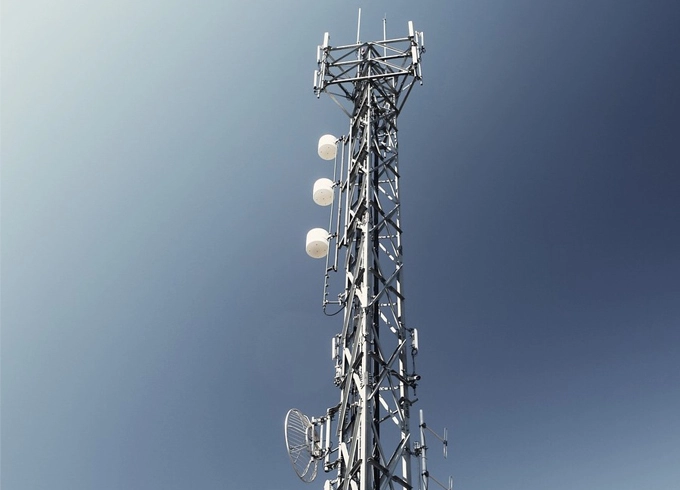A rooftop telecom tower is a telecommunications mast installed on the roof of a building. Its primary function is to support communication antennas for the transmission and reception of signals.
Monopole Tower
This type typically consists of a single vertical pole. It has a simple structure and is often installed directly on rooftops without requiring significant height, making it a cost-effective and practical solution. Commonly used in urban settings, it takes full advantage of existing rooftop space, significantly reducing land use. However, its load-bearing capacity is relatively limited due to its lightweight design. Still, it is easy to install and maintain.
Guyed Tower
A guyed tower is a tall steel structure composed of a central mast supported by tensioned guy wires, built on the rooftop of existing buildings. It usually ranges in height from 6 to 15 meters and is widely used in urban environments. Its advantages include fewer components, ease of installation, lower cost, and the ability to be relocated and reused. However, it has lower load-bearing capacity and reliability compared to self-supporting towers. It also occupies more rooftop space and requires carefully positioned and structurally sound anchor points for the guy wires.
Enhanced Signal Coverage
Mounting antennas on a rooftop telecom tower increases the elevation of the signal transmission point, enabling broader signal coverage and reducing blind spots. This helps ensure better communication quality across a wider area.
Optimized Network Performance
A rooftop tower helps ensure even distribution of signal strength, preventing both signal overlap and coverage gaps. This contributes to overall network performance, enhancing both stability and reliability of the communication system.
Load-Bearing Capacity
It is crucial to assess the building's structural capacity to support the weight of the rooftop telecom tower and associated antenna equipment. A thorough evaluation of the building structure should be conducted during the design phase, and reinforcement measures should be implemented if necessary.
Structural Stability
Rooftop telecom tower is susceptible to vibration and displacement due to wind loads. Ensuring stability requires careful structural design, which may include using guy wires or optimizing the tower's form to enhance its resistance to environmental forces.
Installation Position
The tower should be placed as symmetrically as possible to minimize torsional effects during seismic activity. It is advisable to avoid installing the tower on edge or corner columns; ideally, it should be placed over central structural supports to ensure the safety and integrity of the building.
